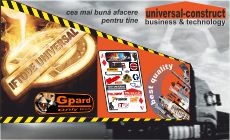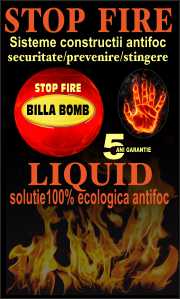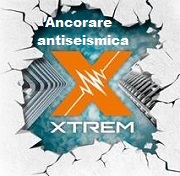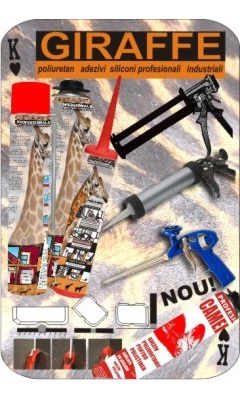Noua generatie tevi PE clasa MULTIPIPE si TWINPIPE
|
New and very high requirements for the construction of water supply networks, sewerage systems, gas grids and telecommunication networks contributed to very strong development of polyethylene (PE) as a raw material in the direction of improving its material properties, especially its resistance to crack propagation, which in turn, contributed to development of new types of pipes, which provide an appropriate level of protection, their long term durability and operating life. New types of raw materials and new designs of PE pipes, meet current market needs and contribute to more cost-effective technologies of their installation.
Why multilayer pipes?
Single-layer pipes
Multilayer pipes
|
 Situations resulting in crack propagation in PE pipes Situations resulting in crack propagation in PE pipes |
||||||||||||||
|
1. Scratches or cuts of the outer surface of the pipe that occurred before its installation (due to incorrect storage or transportation) or at the time of installation. General rule – the pipe with the outer surface damage of the depth greater than 10% of the wall thickness shall not be used for safety reasons. We introduced two types of double-layer polyethylene pipes to the production and commercial offer, MULTIPIPE and TWINPIPE. The MULTIPIPE pipes may be also produced in a version with a steel strip insert placed between the inner pipe and the protective pipe. This strip is used to locate the pipeline in the terrain and detect a possible lack of the pipeline continuity (pipe break). Methods of joining the MULTIPIPE and TWINPIPE pipe sections and fittings:
The TWINPIPE and MULTIPIPE pipes are designed to convey pressurized water and wastewater of the temperature of up to 20°C. When using pipes for conveying water of the temperature above 20°C (max. 40°C), the allowable operating is calculated from the equation: PFA = fT x fA x PN, where the pressure reduction coefficient is given in the table:
The TWINPIPE and MULTIPIPE pipes and fittings may also be used as a cable sheath of power cables, telecommunication lines and other ones, both indoors and outdoors. According to the Hygienic Certificate the TWINPIPE pipes and fittings meet the hygienic requirements and may be used in systems and networks for the conveyance of drinking water. Structural differences of polyethylene pipes:
The difference between the MULTIPIPE and TWINPIPE pipe is that the TWINPIPE pipe is made of two layers of polyethylene bound molecularly to each other. This type of bond is not present in the case of MULTIPIPE pipes. Depending on the purpose, the layers are made of PE 80 or PE 100 polyethylene. For the TWINPIPE pipes, both layers are made of PE 100 polyethylene, however, the outer layer is made of PE 100 RC – plastic material resistant to crack propagation. For the manufacture of products we use PE 100 RC polyethylene of high resistance to slow growth of cracks and to point loads. |
||||||||||||||
 Physical properties of the polyethylene PE 100 RC Physical properties of the polyethylene PE 100 RC |
|||||||||||||||||||||||||
|
The dimensions and tolerances of the TWINPIPE pipes should be in accordance with the standard PN-EN 12201-2:2004 whereas for the MULTIPIPE pipes these dimensional requirements refer to the internal pipe. The thickness of the outer layer of MULTIPIPE pipes depends on the application and agreements between the Manufacturer and a customer but it cannot be lower than the thickness specified in the table below
Dimensions and tolerances The dimensions and tolerances of the TWINPIPE pipes should be conforming to the PN-EN 12201-2:2004 or PN-EN 13244-2:2004 standard. In case of MULTIPIPE pipes these geometrical requirements refer to the internal pipe. The thickness of the outer layer of MULTIPIPE pipes depends on the intended use and agreements between the Manufacturer and the Customer bur it cannot be lower than specified in the table below:
|
 MULTIPIPE pipes MULTIPIPE pipes |
||||||||||||||||||||||||||||||||||||||||||
|
- Range: Ø90 – 450 mm
|
 TWINPIPE Pipes Ø180 – 800mm TWINPIPE Pipes Ø180 – 800mm |
||||||||||||||||||||||||||||||||||||||||||||||||||||||||||||||||||||||||||||||||||||||||||||||||||||||||||||||||||||||||||||||||||||||||||||
|
Double-layer pipes for water supply SDR 11, Ø180-800, PE 100/PE100RC
Double-layer pipes for water supply SDR 17, Ø180-800, PE 100/PE100RC
|
Pagina precedentă: Fitinguri tevi pentru canalizare
Pagina următoare: Noua generatie tevi PE clasa MULTIPIPE si TWINPIPE pentru retele de gaz











